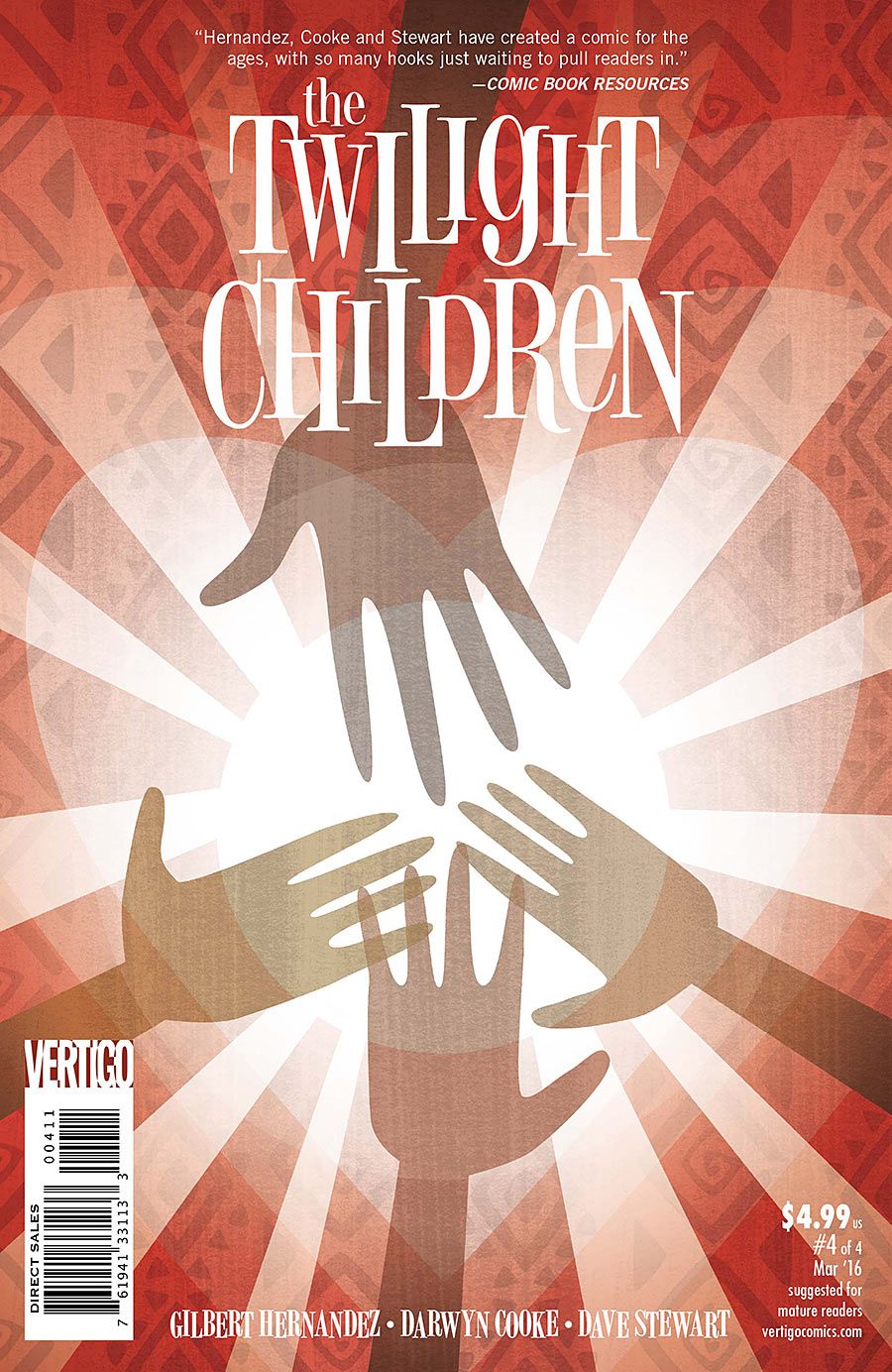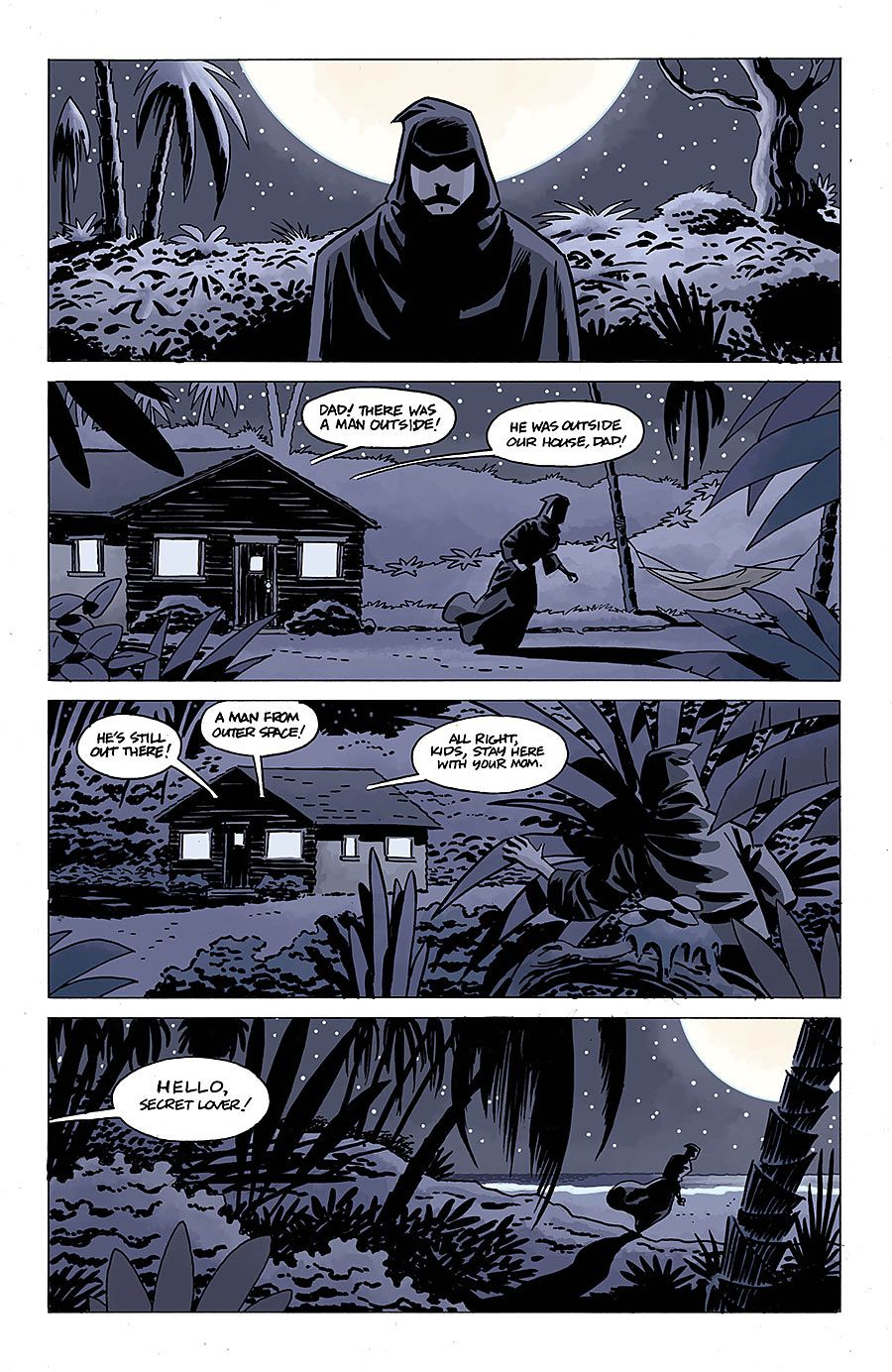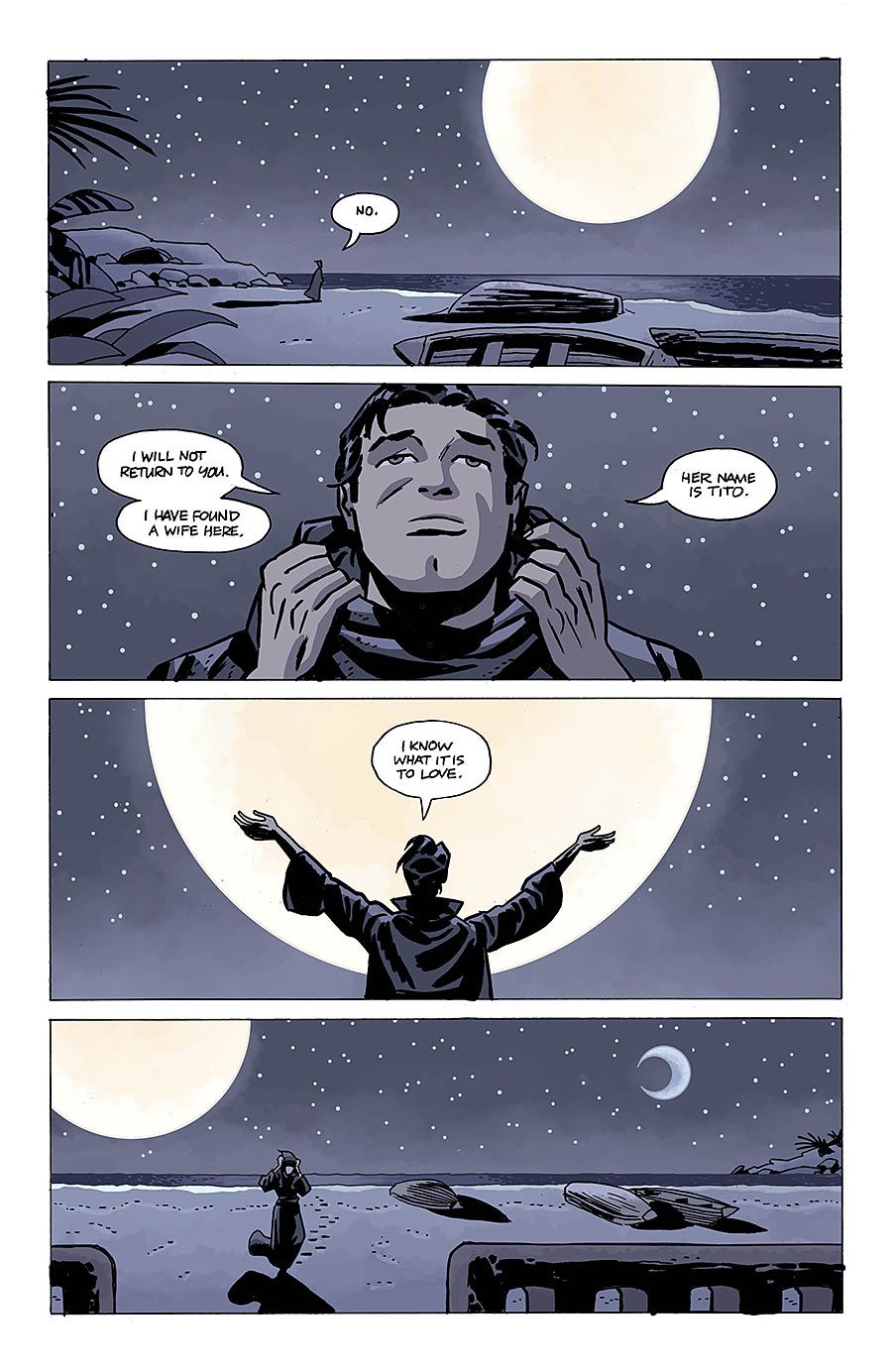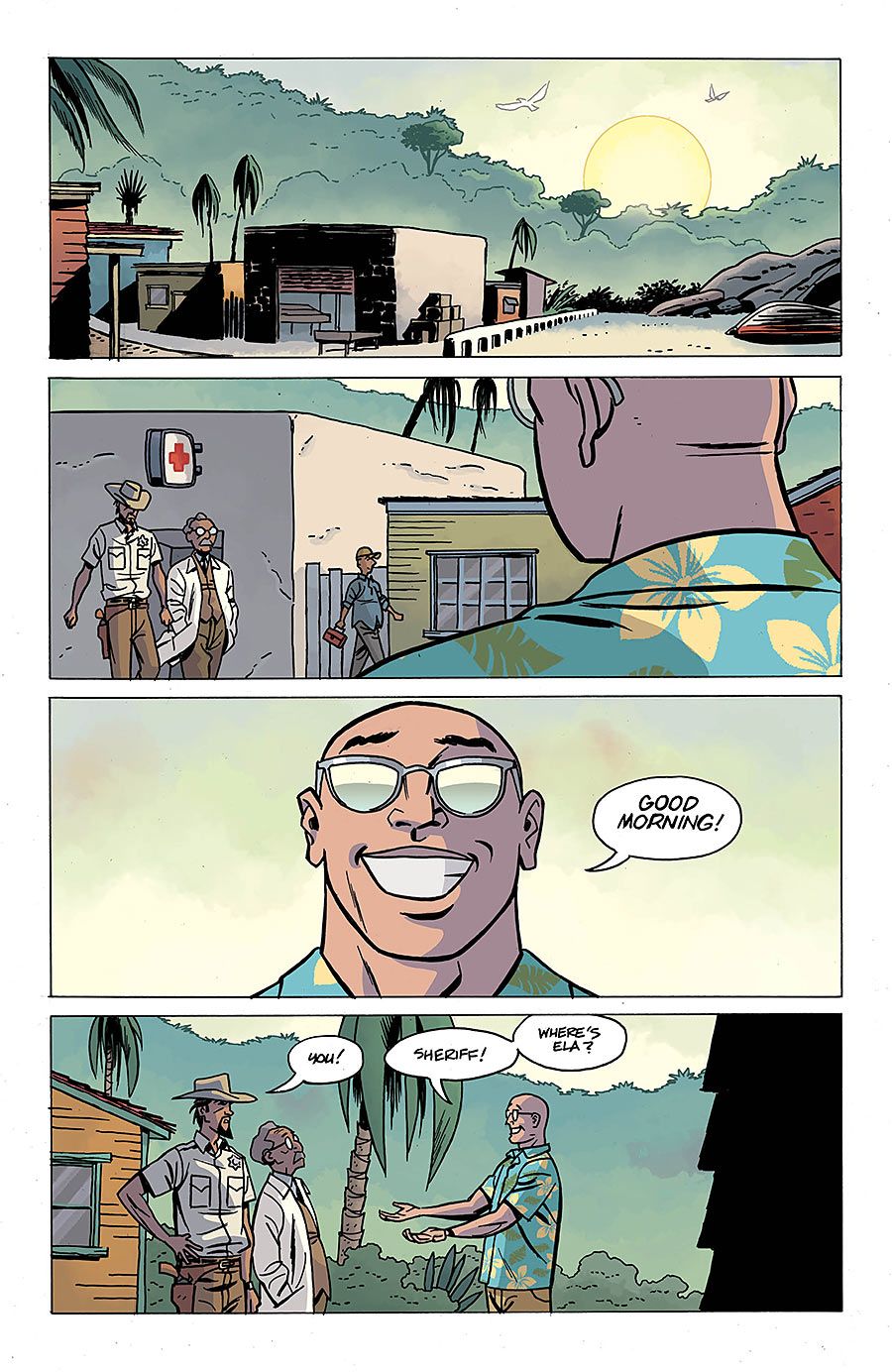When Vertigo announced the launch of 12 new series last July, one of the most instantly intriguing creative teams on the list was Gilbert Hernandez and Darwyn Cooke. With "Twilight Children," Vertigo has two of the most important creators of the past two decades, working together for the first time on an all-new series.
Hernandez, together with his brother Jaime, created one of the seminal indy comics of the 20th Century, "Love and Rockets," as well as a number of acclaimed solo graphic novels. Cooke is the writer and artist of DC Comics' acclaimed "New Frontier" and "The Spirit," and more recently, he has adapted four of Richard Stark's Parker novels into graphic novels.
5-STAR REVIEW: Hernandez & Cooke Make "The Twilight Children" #1 Phenomenal
The two came together after Vertigo executive editor Shelly Bond asked Cooke to pitch a project for DC's creator-owned imprint. Cooke decided he wanted to collaborate with Hernandez, and though Hernandez's initial response was, "He knows how to do a comic -- he doesn't need me," he and Cooke developed their series, and with it, a work process that respects both creators' strengths.
CBR News: You're both critically acclaimed, veteran comic book creators with experience both writing and drawing. How do you work together?
Darwyn Cooke: [We're] two guys who know what they are doing. He sent me the script, and at first I had a bunch of questions, but I thought, "Resist the impulse to bother this guy, just sit with this a bit. I'm just going to go forward with this instinctively and see what he thinks."
Gilbert Hernandez: I was hoping I had enough going on, and when I saw the drawings, there was more -- [Darwyn is] envisioning this, it's coming out perfect. All I had to do was make some characters and dialogue.
Cooke: It took a while, because he has a very particular way of looking at things and it's all over his scripts. It was hard not to be Gilbert and be sure I was being me.
Hernandez: I'm so glad you made that decision! It made it new, for me. I knew the script, I knew the story. I got my copy [of issue #1] and it's beyond what I thought it would be. Much bigger and more impressive and more fun. My script was OK, but not to the extent of how the book has turned out.
Can you give a specific example where that played out in a particular character or scene?
Cooke: He has a character in the script, her name is Cellphone Lady, and that's all I know about her. In the story, when the sheriff is referring to her, he actually calls her "Cellphone Lady." So there's this wonderful, almost iconic, symbolic sort of approach to the character to allow me to come in and interpret that in any way I wanted. And when I looked at Cellphone Lady, I wanted something absurd and incongruous, so I put her in a black Ike jacket, pixie cut, combat boots -- it makes no sense, but it gave me the opportunity to put this very different character into this very rural Latin situation.
Hernandez: I didn't picture her that way. I pictured an island person, maybe older, with a cellphone, but when I saw the first drawings I was really happy. What I anticipated was working out fine. I did leave it open for his imagination. Sometimes I have been pretty vague with scripts, and the artist just got lost. Some artists need a lot of attention to detail and talk behind your back when they do it. But Darwyn already knows what to do. He can go with exactly what he reads, or flesh it out.
The whole first page of Issue #1 is wordless, just a series of panels that establishes some important information about the setting. Page 23 is a wordless sequence as well. How did you come up with sequences like these?
Hernadez: I wrote a simple [description]: "It's a small seaside village, kids running around, people working, maybe little boats, nets." That was about it. All a good artist has to do is picture that and run with it.
Cooke: One of the enormous differences here is, Gilbert is a cartoonist, so Gilbert understands the power of silent sequences. Most writers, their ego won't allow it. Even if they need a silent page, if there are no words, they feel they are absent from it. A cartoonist is visualizing; he only uses words when he needs them.
I'm also proud there is not a single narrative caption anywhere. It is all happening in front of you; if I fail, certain parts won't be clear. There are sequences later in the story that are magical, and esoteric things are happening. Most writers would have some character spout out a bunch of expository nonsense, but Gilbert just left it open, as it should be, so the challenge is to make it clear.
Hernandez: What drives me crazy in TV shows and sci-fi or horror movies is, no one has ever seen a sci-fi movie before, they have never seen flying saucers. I had the villagers already know about the situation. In real life, that's what would happen.
I like the "Serial" element happening in day to day life, how the three of us, maybe we're at the beach, this thing happens, one goes to call the police, another says, "What is it?" another goes over there. Different personalities react differently. In a sense, it is a magic realism story. You can stress the natural feel of it instead of the exciting visual. You can go either way; I like the naturalistic way.
What sort of freedom does a science fiction story like this give you? What sort of constraints do you impose on yourself when you write it? And what can't you do?
Hernandez: Nothing. Once I get into a project like this, knowing it's a Vertigo book, with a larger audience, a popular artist like Darwyn, it's already done. I just have to fill in what I think I'm good at. I'm already there. As a matter of fact, I have to come up with more fantastic elements. They are really unnecessary, but because comics are visual, we want to see cool stuff, so I had to create these scenes that were fantastic looking.
Cooke: From my end, all my cues come from Gilbert because of the way we did this, so I am just trying to reach for whatever the script calls for. I think there have been maybe twice when I would e-mail Gilbert and say, "In this scene here, maybe we could push the eeriness up a bit if we were to do this."
The other great thing about it is, I am so married to plot, I would waste pages and pages of a story explaining what is going on in a level that isn't really necessary, and Gilbert allows the reader to fill in some of the mundane blanks for themselves. It's not all spelled out, and there's room for the reader to bring their perceptions and feelings to it. I think it's possible for a lot of different people to read "Twilight Children" to come out of it with different feelings. It's for them to evaluate what is happening and make a decision for themselves.
Once you pitched the concept to Vertigo, how did your editors help you refine it? Did you just go ahead on your own, or did they have any suggestions or guidance for you?
Hernandez: Shelly gets really involved in the project, at least with me, and she's the type of person who says, "You go ahead, and I'll correct the spelling." She calls me and says, "I like this," gives me suggestions for things she wants to see. Most of the time it's fun. Sometimes she gets so worked up -- "I want a whole new issue for that." I think that's why she's still around -- she's so passionate.
Cooke: I have been doing this 15 years straight, and "Twilight Children" is the first time I have ever seen an editor as plugged in to what I am doing. She sent me a black and white PDF of the book with just her notes as to what she liked, visually. A lot of the time, when you are working with a larger company, you are lucky if you can get the [editor] to e-mail you to let you know he got the material. With Shelly, it's very different. She is completely involved.
I also find there is a lot of positive reinforcement with her. If she sees some good press or hears something good, she's right there, passing it on. Any questions she has that help build the story make it more powerful, because she is so involved. When she does come in with a comment that might mean a change or re-eval, you are looking at it as sincere and genuine because she has intimate knowledge of what she is dealing with.
"Twilight Children" #4 is in stores now.





